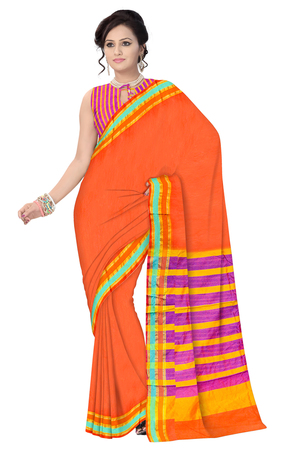Sarees have a long history and are inextricably intertwined with the cultural history of India. Patola sarees, one of the most famous sarees of Gujarat, have a long and rich history. The spinning, weaving and dyeing of the exquisite sarees in pure silk is an art form. It requires special skills and expertise to weave and dye such beautiful sarees. The saree originates from a place called Patan in Gujarat. It is a small place, about 127 kilometers away from Ahmadabad in Gujarat. The place got famous because of its weaving of double ikat or patola cloth. It was normally a silk cloth that was held sacred and later it changed different forms with time.
The origin of Patola dates back to even 700 years ago and the ancient style has got the form of sarees worn by women now. The tie and dye that is done on the sarees has a special technique. Only natural colors from cochineal, turmeric, manjistha, indigo, kesudo, and marigold flower, pomegranate skin, henna, lac, and catechu are used. Other ingredients like copper sulphate, potassium dichromate, alum etc, are needed for this dyeing process. It is long and tedious and is a matter of extreme skill. The way the sarees are made is extremely eco-friendly.

There is a special technique in weaving the patola saree. The warp and the weft threads are tied to stop the dyeing in those areas according to the pattern of the design. This process is repeated for all of the colors that would be there in the final woven fabric. This special technique of dyeing both the warp thread and the weft thread is known as double ikat. It requires special knowledge and skill to arrange and wrap the threads before the dyeing process to get the desired effect. The colorful nature of the sarees and their intricate geometric patterns make them so famous. Traditional designs include squares, boxes, strips, leaf or floral patterns and the panchphool or five flowers. The entire process is very tough and often requires days and months of taxing labour but the end result is breathtakingly beautiful. A Patola saree is a prized possession for every owner and it deserves to be. So, next time you are in mood to buy sarees go for this royal, grandeur sarees that spell out elegance and grace.
” Discover more such fabulous sarees & styles on Mirraw.com’s – Great Indian Saree Festival from 28-30 September. Tons of choice at great prices. Follow #gisf “








